This series of posts about Yoeme (Yaqui) Pascola masks began on July 4, 2016.
In this final post about the masks of Camilo Álvarez Buitimea I will continue to mix made for sale masks with others that were said to have been danced. I will begin with a made for sale goat that could easily have been used by a dancer. This mask greatly resembles other goat faced masks that were carved by Camilo’s father, Inez “Cheto” Alvarez. We might call this a “conventional” made for sale mask, in contrast to the majority of Camilo’s made for sale masks that are so unconventional, but to my eyes wonderful.
This looks like a faithful copy by Camilo of the usual goat faced Pascola masks that were carved by Cheto Álvarez.
This has the classic profile of the masks of Cheto.
It even has a forehead cross.
This mask is 9½ inches tall, 5½ inches wide, and 2½ inches deep.
There is no evidence that this mask was ever danced and it has the usual notation used by Barney and Mahina for a made for sale mask, “CAB,2/96, Mexico.” But because this mask does not have Camilo’s typical back, I question whether this information is accurate. To my eye, this is actually a mask by Cheto Álvarez. However it is Camilo and not Cheto who made it a point to glue the string holding the hair bundles, so perhaps they worked together on this mask.
On the other hand, the next mask does seem to be a typical made for sale mask by Camilo. It is said to portray a “Coyote.” Ironically, this mask is not so different from the canine masks of Rodrigo and Jesús Rodríguez that you saw in recent posts. Here Camilo is carving images that fall within the mainstream.
This mask has an open mouth and menacing teeth.
There is no forehead cross, and the rim design is unremarkable.
This mask is 9½ inches tall, 5½ inches wide, and 2½ inches deep.
This one says “CAB, Mexico, 8/04,” and the style of the back is typical of Camilo.
Turning to the last group of “danced” Pascola masks from the collection of Barney Burns and Mahina Drees, here is a danced mask that portrays a fox.
There is no forehead cross or chin cross.
The ears are well carved.
Here is a close-up shot of this face, highlighting the fox’s pointed nose.
This mask was danced, but as usual for Camilo, there is no forehead cross.
The staining from use on the back of this mask is unequivocal, and the back is in Camilo’s style.We can note in passing that Camilo does not necessarily make it a point to provide a ventilation opening for the dancer at mouth level.
The final mask in this post stands in contrast to Camilo’s usual Pascola masks, which depict unusual animals, in comparison to the standard designs found in Pascola dancing.
The information accompanying this mask states that it was Camilo who carved this fairly conventional goat Pascola mask and that this mask has been danced for many years.
This extended tongue that hugs the lower lip is a typical detail on the masks of Camilo’s father, Inez “Cheto” Álvarez. Here Camilo again appears to be closely copying his father’s work.
There are relief carved horns, but no forehead cross.
This mask was probably carved by Camilo, as it has a his typical back design. It has obviously been danced for many years.
Next week I want to turn to the masks of Gerardo Barcelo Matus.

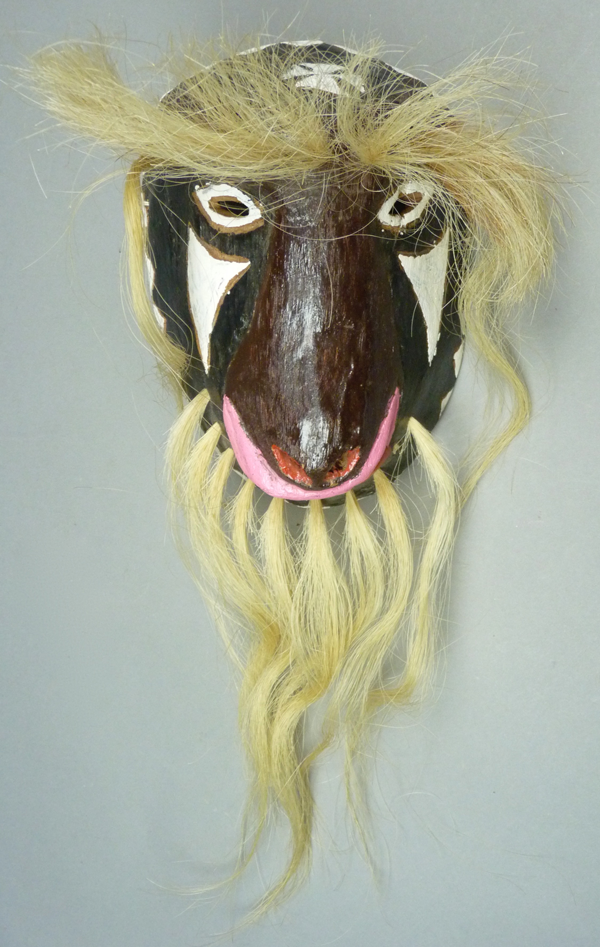
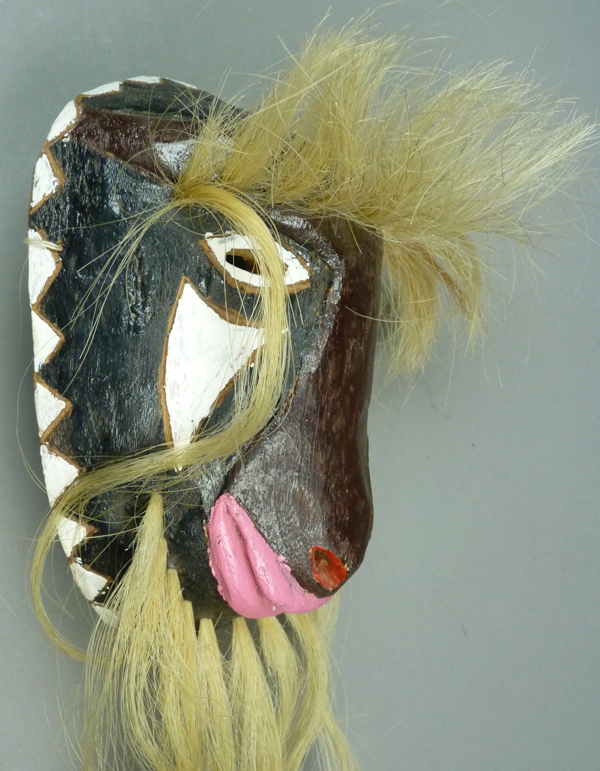
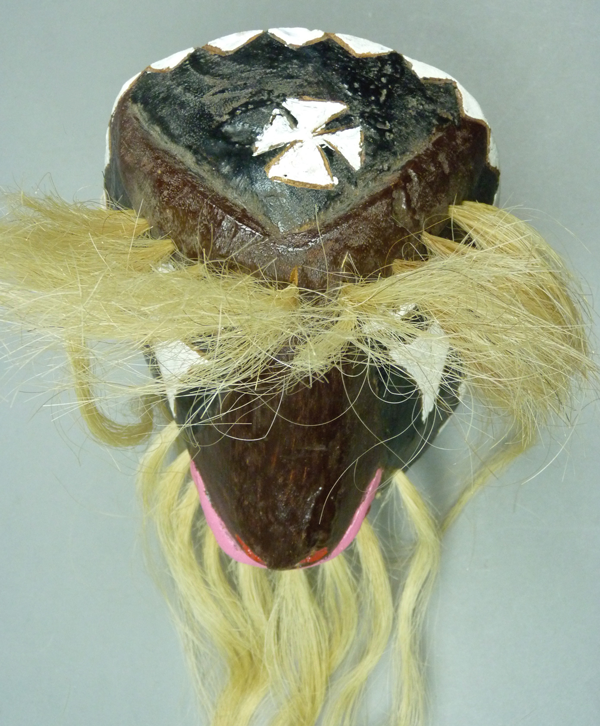
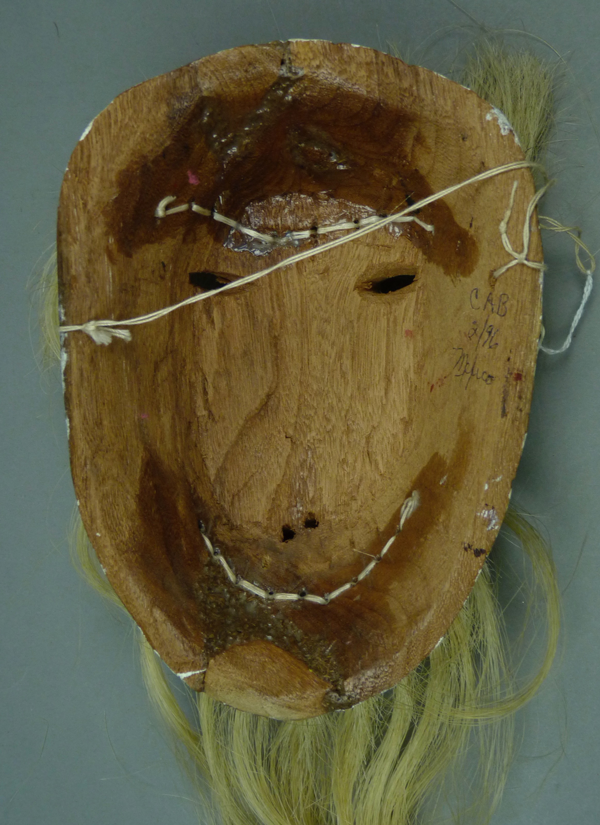
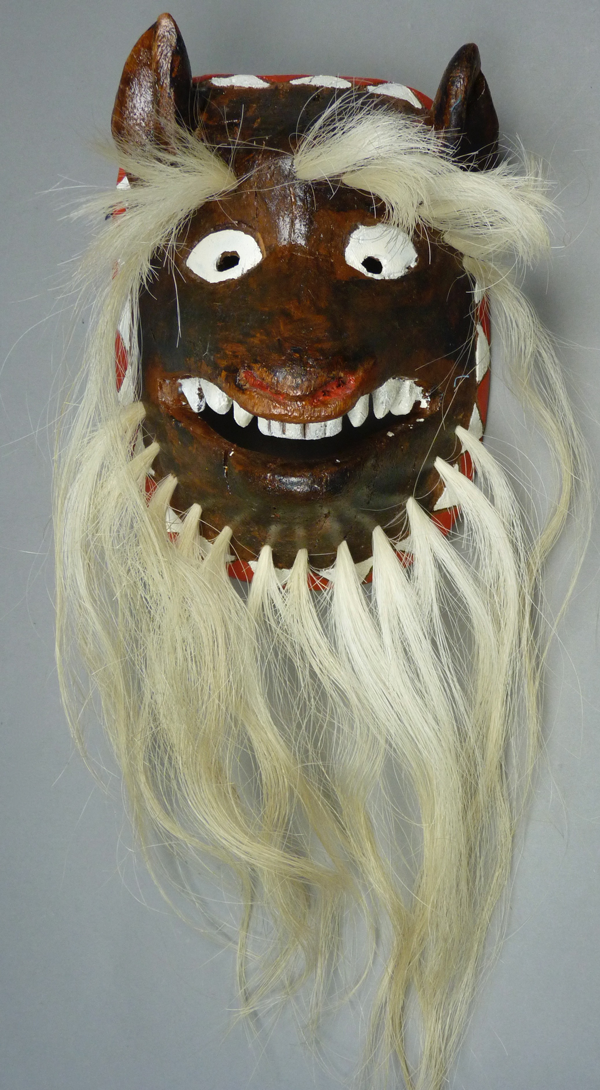

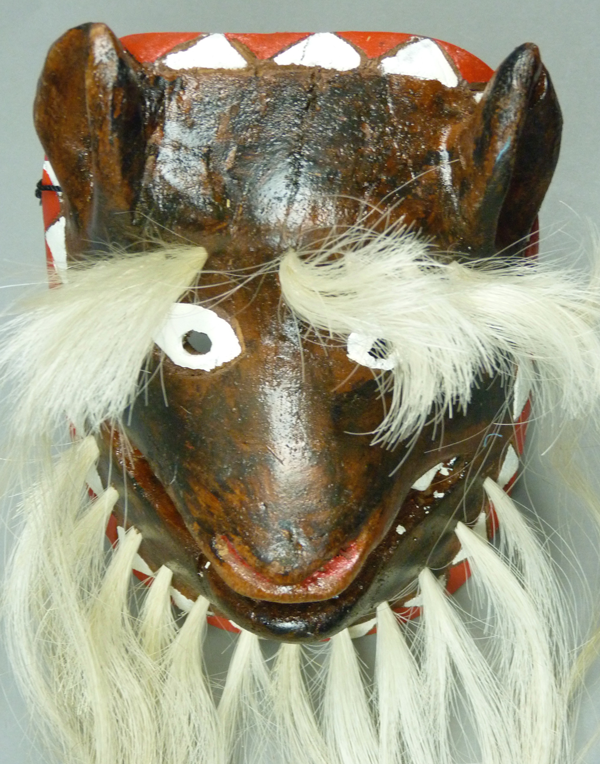
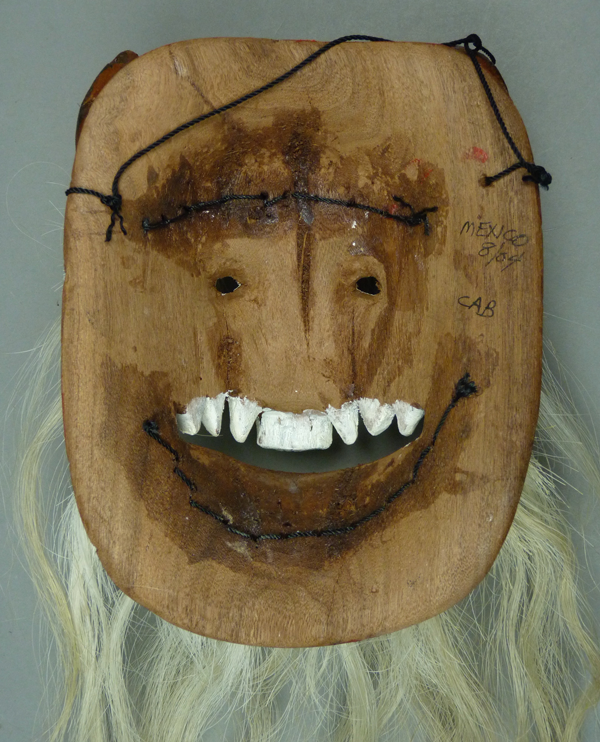
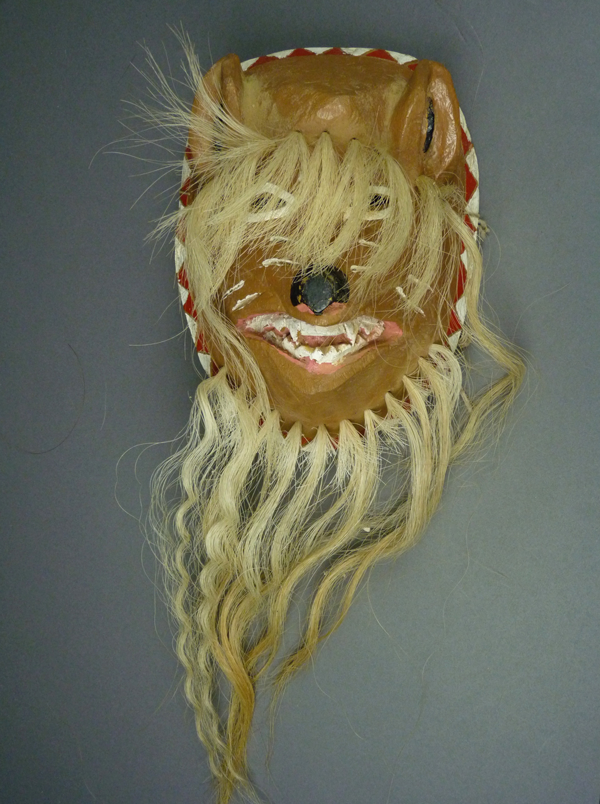
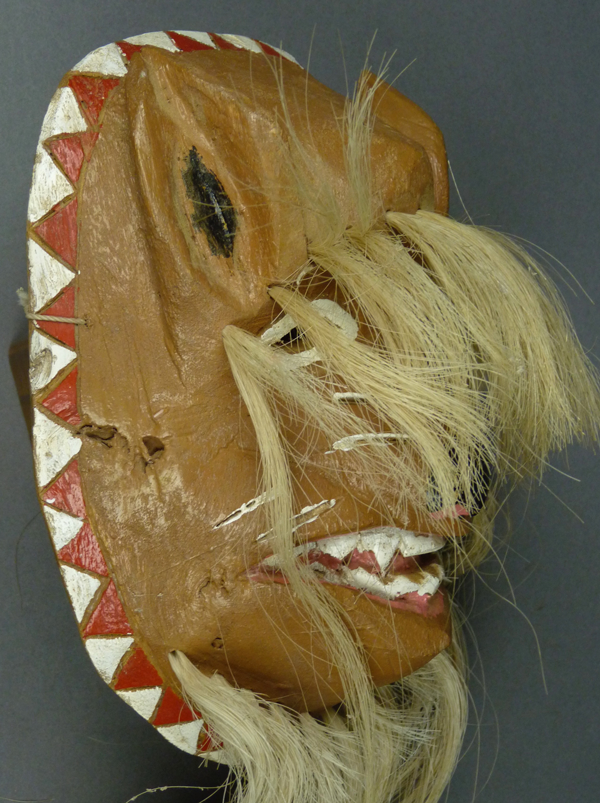
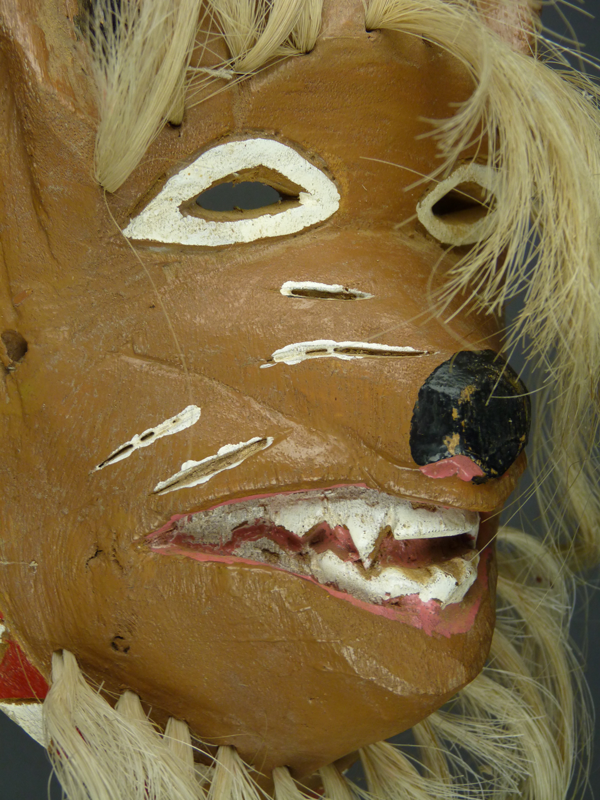

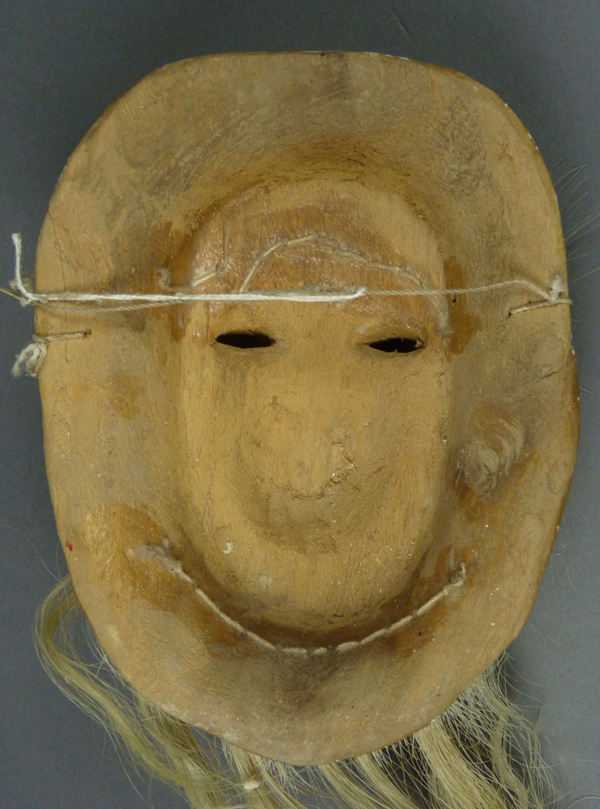
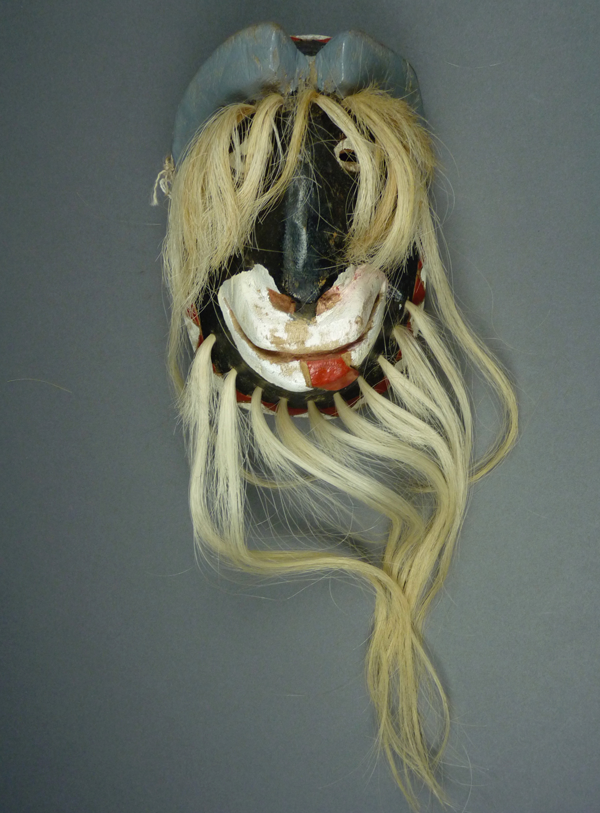
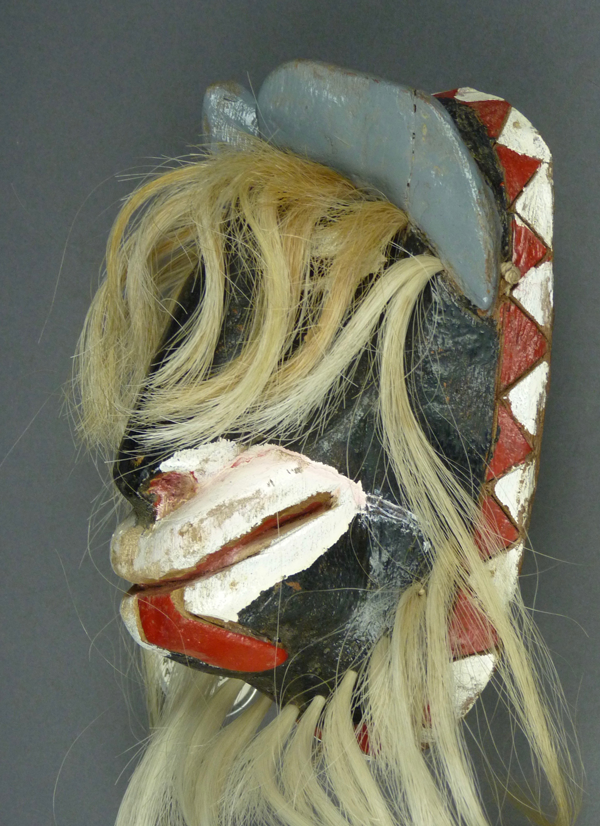
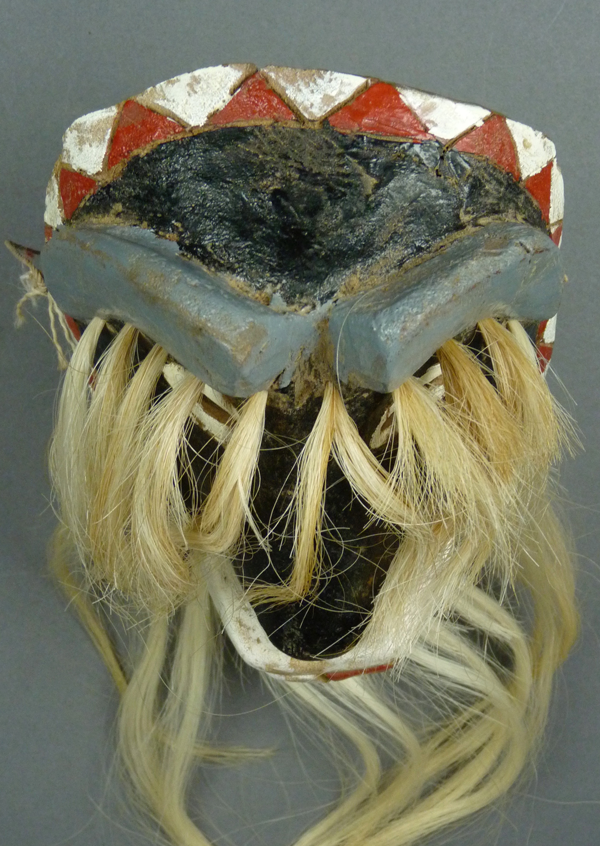
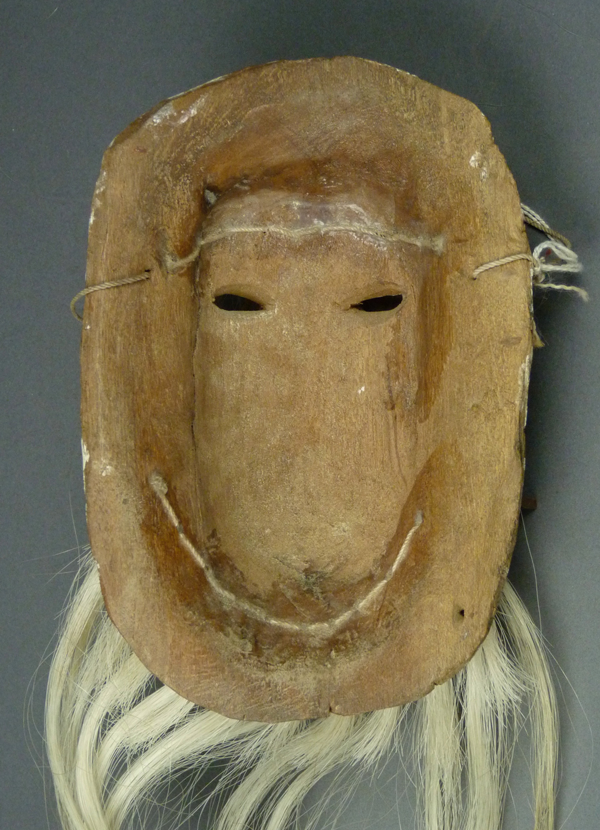
2 comments on “Camilo Álvarez Buitimea 3”